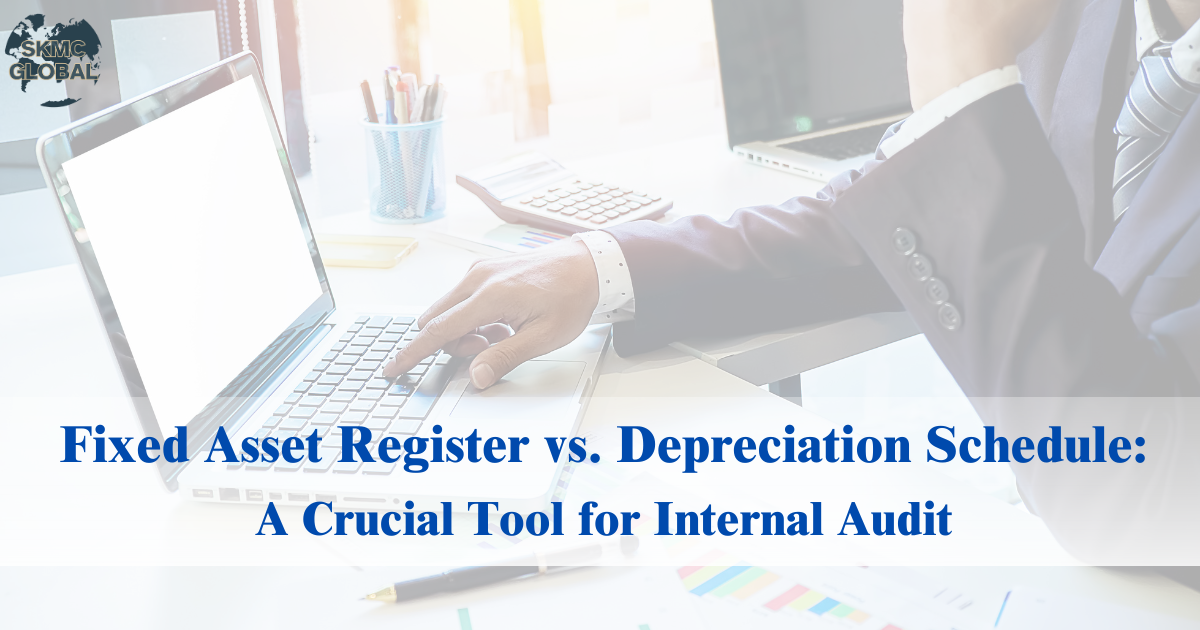
The evolution of the digitalized economy has transformed the world of business, trade, and taxation to a great extent. As businesses have transcended geography, governments are facing new unknown challenges of taxing transactions that are taking place in the absence of physical presence. Where the companies were physically present is not sufficient as a traditional tax nexus anymore. This vacuum has ushered in the dawn of digital taxation, a revolution which redefines the notion of tax nexus in modern times.
This blog discusses how digital taxation is revolutionizing tax nexus, breaking down traditional jurisdictional barriers, and setting new standards for governments, policy-makers, and multinational enterprises (MNEs) worldwide.
The Evolution of Tax Nexus in the Global Economy
Traditionally, "tax nexus" referred to the physical presence of an enterprise/business within a country. When a company possessed an office, warehouse, or employees within a country, it created a taxable connection there. In the high-speed era of the digitalized economy nowadays, businesses can sell goods, provide services, and generate mammoth revenues in countries without setting foot inside them.
For example, a streaming company that is set up in a given country may receive millions of dollars from subscribers in another country with no physical presence. This shift unveiled loopholes in cross-border tax legislation, allowing corporations to stack earnings from foreign economies without paying enough taxes in the marketplaces. It is this imbalance that gave rise to the idea of digital taxation.
What is Digital Taxation?
In its essence, digital taxation is taxation policy and regulation for harvesting value firms in the digital economy generate. It is a step toward reshaping bases for taxing authorities to obtain taxable presence from geographical connections to necessary digital contact with the market or users.
Unlike physical systems, digital taxation creates a nexus of presence, but presence in the digital context, not physical. A company can have to pay taxes in a market if it has a specific revenue threshold in users within a market, even without physical infrastructure.
This framework acknowledges that the potential for making money out of information, users, and online activity is as viable as the bricks-and-mortar approaches.
Drivers of the Shift to Digital Taxation
There have been several drivers that have propelled the adoption of digital taxation globally:
1. Expansion in Digitalized Economy
The increase in reliance on technology-driven businesses such as e-commerce sites, cloud host companies, social network platforms, and streaming suppliers made classical nexus rules irrelevant.
2. Tax Base Erosion and Profit Shifting (BEPS)
Multinationals have traditionally shifted profit to tax havens through transfer pricing and intangible allocations. Digital taxation seals the loopholes by imposing tax on profit where value is being generated and economic activity is being conducted.
3. Public Demand for Fairness
Individuals and governments have questioned how the technology leaders earn billions in their respective countries of operation without bringing much in the form of tax revenues to their host nations. The taxation of digital has been viewed as a step towards equity.
4. Global Coordination
International institutions like OECD and G20 are moving towards coordinated frameworks like Pillar One and Pillar Two reforms. These frameworks aim to redistribute taxing rights on an equitable basis among countries in the digital age environment.
Forms of Digital Taxation
Different countries have implemented their ideas about digital taxation, and thus there is a confusing labyrinth of legislations. Here are some of the approaches utilized below:
- Impose a Digital Services Tax (DST): Tax on revenues earned from digital services such as advertisement, online marketplace, or streaming.
- Broad Economic Presence (SEP): Nexus provisions updated according to user activity, sales, or revenue tests regardless of physical presence.
- Withholding Tax Models: Foreign service providers' digital payments are taxed at source.
- Electronic Taxation Systems: Governments themselves are deploying electronic taxation systems for tracking digital transactions and ensuring compliance.
All these programs demonstrate the way electronic taxation and digital taxation are transforming tax nexus rules.
How Digital Taxation Reforms Tax Nexus?
The solution of digital taxation is to dissolve the physical presence reliance on tax nexus. Nexus is created by digital interactions. The following are great ways it restructures the traditional model:
1. Market-Oriented Taxation
Profits previously were taxed wherever production or headquarters was. In digital taxation, profits flow to jurisdictions where consumers or users are located, so revenue-sharing can be based on actual market presence.
2. User Data as a Value Driver
User data as a value driver exists in the digital economy. Companies leveraging technology generate tremendous value by gathering and disseminating user behavior. Value creation is well known to digital taxation, and tax rights are entrusted to jurisdictions where users are located.
3. End of Tax Havens Benefit
Revenue being redirected to havens of taxation by intellectual property transfers becomes wasteful under digital taxation since it discourages revenues from being imposed in the jurisdiction where economic activity is being conducted.
4. Broader Nexus Scope
The threshold of nexus has been extended from physical presences to internet presence, active subscribers, or online service revenues. Digital taxation enlarges the scope of taxable presence beyond geographical borders.
Global Views on Digital Taxation
Governments everywhere have pursued different digital tax systems, each of which had domestic origins:
European Union: Several member countries, including France, Italy, and Spain, have unilaterally imposed digital services taxes in hopes of an OECD consensus.
India: India led the way, implementing the Equalisation Levy, a levy on digital activity, to tax profits from non-resident online advertising and e-commerce businesses.
United States: The U.S. was once opposed to taxing unilaterally but is currently engaged with OECD negotiations to promote fair profit redistribution in the digital age.
Emerging Economies: In emerging economies as a whole, taxation of digital economy offers a tool for generating revenue from foreign technological goliaths who reap the benefits of their massive user bases with little domestic investment.
This piecemeal approach emphasizes the necessity of international collaboration to prevent double taxation as well as trade wars.
Challenges in Implementing Digital Taxation
While digital taxation is theoretically possible, its application presents several challenges:
1.Lack of Consensus
Double taxation risk threatens due to the absence of international consensus, thus double taxing the same income by various nations.
2.Administrative Complexity
Digital taxation and follow-up on digital footprints require robust digital infrastructure, which is nonexistent in most nations.
3.Trade Disputes
Unilateral measures such as DSTs created trade tensions, particularly between the EU and the United States.
4.Defining Value Creation
It is challenging to determine where value is being created in the digital economy. Is it where servers are situated, where users are, or firm algorithms?
5.Compliance Burden
MNEs have a gigantic compliance burden when they conform to different digital tax regimes around the world.
The Future of Digital Taxation and Nexus Rules
The way forward is to establish rules that are applicable everywhere and are equitable, certain, and simple. The OECD's "Inclusive Framework on BEPS" establishes two pillars:
- Pillar One: Allocates a portion of residual profits of worldwide MNEs to market jurisdictions regardless of physical presence.
- Pillar Two: Imposes a global minimum corporate tax to avoid tax rivalry among states.
These reforms are a pioneering move in the direction in which digital taxation will determine nexus rules in the coming decades.
Furthermore, increased sophisticated application of electronic taxation technology, such as real-time invoice reporting and tracking of electronic transactions, will be the sidekick to digital taxation policy. These technologies bring transparency, reduced evasion, and refresh compliance in the digital economy.
Case Studies: Digital Taxation in Action
1. India's Equalisation Levy
India was the initial country to introduce a digital tax on foreign e-commerce operators. The tax ensures that income from Indian consumers is distributed in Indian tax revenues.
2. France's Digital Services Tax
France levied a 3% tax on digital adverting and marketplace revenues. Fought by the U.S. but still, it is one example of how digital taxation creates nexus that isn't physical.
3. UK's Digital Services Tax
The UK imposed a comparable fee on tax income of search engines, social networks, and online stores making money from British consumers.
These examples illustrate the way digital taxation makes sharing revenue more justifiable and redefines nexus.
Business Opportunities under the Age of Digital Taxation
Although compliance may be inconvenient, digital taxation also offers opportunities to innovative businesses:
- Improved Reputation: Payment of correct taxes in consumer markets makes the brand legitimate.
- Internet Breakthroughs: Electronic taxation systems enable compliance and accounting.
- People on Equal Terms: Digital taxation closing loopholes will enable small businesses to compete on equal terms with technology giants.
Thus, businesses must embrace digital taxation as a regulatory imperative and a chance to increase trust across the world.
Conclusion
The shift from physical nexus to digital nexus is potentially the biggest shift in the history of cross-border taxation. Digital taxation recognizes the fact that digital age value creation is happening outside boundaries, and tax principles have to keep pace. Redefining nexus based on user interaction, revenue, and digital footprints, digital taxation offers for more balanced apportionment of tax revenue across jurisdictions.
And even though there are still challenges to be overcome—such as avoiding double taxation and obtaining global consensus—the way is clear. The worldwide tax policies will continue to get affected by Digital taxation, digital tax, and electronic taxation systems. It will be ensuring a fair proportion of revenue for governments and a new era of responsibility and opportunity for business.
Recent Posts
-
 Incorporation of Company in UAE...
Dec 03,2025
Incorporation of Company in UAE...
Dec 03,2025
-
 Legal Entity Identifier LEI - Purpose and Applicab...
Dec 01,2025
Legal Entity Identifier LEI - Purpose and Applicab...
Dec 01,2025
-
 Implementation of New Labour Codes 2025...
Nov 29,2025
Implementation of New Labour Codes 2025...
Nov 29,2025
-
 A Step-by-Step Guide to a Smooth Payroll Outsourci...
Nov 28,2025
A Step-by-Step Guide to a Smooth Payroll Outsourci...
Nov 28,2025
-
 PESO Certification in India...
Nov 26,2025
PESO Certification in India...
Nov 26,2025
-
 Family Trusts for NRIs- Managing Indian Assets fro...
Nov 24,2025
Family Trusts for NRIs- Managing Indian Assets fro...
Nov 24,2025
-
 Decoding Disclosures: Section 184 of Companies Act...
Nov 21,2025
Decoding Disclosures: Section 184 of Companies Act...
Nov 21,2025
-
 All you want to know about Recycling business in I...
Nov 20,2025
All you want to know about Recycling business in I...
Nov 20,2025
-
 What is Seed Fund Scheme and its relevance for Sta...
Nov 19,2025
What is Seed Fund Scheme and its relevance for Sta...
Nov 19,2025
-
 Incorporation of Company in Singapore...
Nov 18,2025
Incorporation of Company in Singapore...
Nov 18,2025
-
 How to upgrade your AEO T2 certification to AEO T3...
Nov 15,2025
How to upgrade your AEO T2 certification to AEO T3...
Nov 15,2025
-
 What is the relevance of APEDA Registration and it...
Nov 14,2025
What is the relevance of APEDA Registration and it...
Nov 14,2025
-
 Applicability of Indian Accounting Standards for c...
Nov 11,2025
Applicability of Indian Accounting Standards for c...
Nov 11,2025
-
 Public vs. Private Trust: key Differences in Regis...
Oct 28,2025
Public vs. Private Trust: key Differences in Regis...
Oct 28,2025
-
 Donation and Foreign Contributions to Trusts in In...
Oct 23,2025
Donation and Foreign Contributions to Trusts in In...
Oct 23,2025
-
 Redeemable Preference Shares as a Financial Tool...
Oct 22,2025
Redeemable Preference Shares as a Financial Tool...
Oct 22,2025
-
 STPI Unit and Non-STPI Unit...
Oct 16,2025
STPI Unit and Non-STPI Unit...
Oct 16,2025
-
 Country-by-Country Reporting (CbCR) and Its Evolvi...
Oct 09,2025
Country-by-Country Reporting (CbCR) and Its Evolvi...
Oct 09,2025
-
 What is Free Trade Agreement and Certificate of Or...
Oct 08,2025
What is Free Trade Agreement and Certificate of Or...
Oct 08,2025
-
 What is the relevance of status holders certificat...
Oct 06,2025
What is the relevance of status holders certificat...
Oct 06,2025
-
 Redemption of Advance Authorization under Foreign ...
Oct 04,2025
Redemption of Advance Authorization under Foreign ...
Oct 04,2025
-
 What is provisional assessment of Bill of Entries ...
Sep 29,2025
What is provisional assessment of Bill of Entries ...
Sep 29,2025
-
 Redemption of EPCG License...
Sep 26,2025
Redemption of EPCG License...
Sep 26,2025
-
 MOOWR (Manufacturing and Other Operations in Wareh...
Sep 24,2025
MOOWR (Manufacturing and Other Operations in Wareh...
Sep 24,2025
-
 Procedure to Apply SCOMET License...
Sep 22,2025
Procedure to Apply SCOMET License...
Sep 22,2025
-
 Landscape of Semiconductor Industry while Doing Bu...
Sep 18,2025
Landscape of Semiconductor Industry while Doing Bu...
Sep 18,2025
-
 The Hidden Costs of In-House Accounting v/s Outsou...
Sep 17,2025
The Hidden Costs of In-House Accounting v/s Outsou...
Sep 17,2025
-
 TDS on sale of immovable property by an nri...
Sep 10,2025
TDS on sale of immovable property by an nri...
Sep 10,2025
-
 Setting up a Project Office in India...
Sep 08,2025
Setting up a Project Office in India...
Sep 08,2025
-
 Tax Implication for Transferring NRO Funds to NRE ...
Sep 05,2025
Tax Implication for Transferring NRO Funds to NRE ...
Sep 05,2025
-
 How outsourcing CFO services helps the corporates ...
Aug 27,2025
How outsourcing CFO services helps the corporates ...
Aug 27,2025
-
 Why a Periodical Cash Flow Statement is Necessary ...
Aug 26,2025
Why a Periodical Cash Flow Statement is Necessary ...
Aug 26,2025
-
 What is FATCA and CRS reporting and its difference...
Aug 22,2025
What is FATCA and CRS reporting and its difference...
Aug 22,2025
-
 What are unclaimed TDS Credits and how to claim it...
Aug 21,2025
What are unclaimed TDS Credits and how to claim it...
Aug 21,2025
-
 Digital Taxation is reshaping Tax Nexus Between Ju...
Aug 20,2025
Digital Taxation is reshaping Tax Nexus Between Ju...
Aug 20,2025
-
 Procedure to Take PF Registration and Its Complian...
Aug 18,2025
Procedure to Take PF Registration and Its Complian...
Aug 18,2025
-
 Procedure to take PSARA License...
Aug 11,2025
Procedure to take PSARA License...
Aug 11,2025
-
 Mandatory factory license while setting up manufac...
Aug 08,2025
Mandatory factory license while setting up manufac...
Aug 08,2025
-
 Procedure for obtaining NBFC Registration in India...
Aug 04,2025
Procedure for obtaining NBFC Registration in India...
Aug 04,2025
-
 FSSAI License registration for Food Business...
Jul 14,2025
FSSAI License registration for Food Business...
Jul 14,2025
-
 How Management Information System (MIS) reporting ...
Jul 11,2025
How Management Information System (MIS) reporting ...
Jul 11,2025
-
 IFRS 9 impairment- A complete guide...
Jul 12,2025
IFRS 9 impairment- A complete guide...
Jul 12,2025
-
 Why most of the companies are shifting to hr and p...
Jul 10,2025
Why most of the companies are shifting to hr and p...
Jul 10,2025
-
 A complete guide on valuation of shares...
Jul 10,2025
A complete guide on valuation of shares...
Jul 10,2025
-
 BIS registration for foreign manufacturer...
Jul 09,2025
BIS registration for foreign manufacturer...
Jul 09,2025
-
 Understanding the Scope of the Shops and Establish...
Jul 08,2025
Understanding the Scope of the Shops and Establish...
Jul 08,2025
-
 Coso framework: Complete guide on internal control...
Jun 26,2025
Coso framework: Complete guide on internal control...
Jun 26,2025
-
 Components and Process for Conducting Internal Aud...
Jun 25,2025
Components and Process for Conducting Internal Aud...
Jun 25,2025
-
 What is ICFR and Why It is Important for Businesse...
Jun 24,2025
What is ICFR and Why It is Important for Businesse...
Jun 24,2025
-
 Understanding WPC Certification and its applicabil...
Jun 23,2025
Understanding WPC Certification and its applicabil...
Jun 23,2025
-
 Procedure to take EPR registration for battery was...
Jun 21,2025
Procedure to take EPR registration for battery was...
Jun 21,2025
-
 3PL Logistics...
Jun 19,2025
3PL Logistics...
Jun 19,2025
-
 What is E-Waste and role of EPR in Waste Managemen...
Jun 17,2025
What is E-Waste and role of EPR in Waste Managemen...
Jun 17,2025
-
 M&A Due Diligence in India: How to Spot Target Com...
Jun 16,2025
M&A Due Diligence in India: How to Spot Target Com...
Jun 16,2025
-
 BIS crs certification for electronic products...
Jun 12,2025
BIS crs certification for electronic products...
Jun 12,2025
-
 All you need to know about WPC ETA certification f...
Jun 11,2025
All you need to know about WPC ETA certification f...
Jun 11,2025
-
 What is CDSCO Registration under The Drugs & Cosme...
Jun 10,2025
What is CDSCO Registration under The Drugs & Cosme...
Jun 10,2025
-
 Procedure to Take CDSCO Registration in India: A C...
Jun 09,2025
Procedure to Take CDSCO Registration in India: A C...
Jun 09,2025
-
 All You Need to Know About AERB Registration...
Jun 07,2025
All You Need to Know About AERB Registration...
Jun 07,2025
-
 Understanding POSH (Prevention of Sexual Harassmen...
Jun 03,2025
Understanding POSH (Prevention of Sexual Harassmen...
Jun 03,2025
-
 Chartered Accountant's role in financial managemen...
May 23,2025
Chartered Accountant's role in financial managemen...
May 23,2025
-
 5 Things to keep in mind while running your payrol...
May 17,2025
5 Things to keep in mind while running your payrol...
May 17,2025
-
 Why BIS Certification is Crucial for Importers and...
May 15,2025
Why BIS Certification is Crucial for Importers and...
May 15,2025
-
 Top 7 Reasons Indian Entrepreneurs Are Switching t...
May 07,2025
Top 7 Reasons Indian Entrepreneurs Are Switching t...
May 07,2025
-
 Incorporation of Company in Japan...
Apr 24,2025
Incorporation of Company in Japan...
Apr 24,2025
-
 How to set up a Representative Office in Singapore...
Apr 14,2025
How to set up a Representative Office in Singapore...
Apr 14,2025
-
 BIS certificate for medical equipments...
Apr 09,2025
BIS certificate for medical equipments...
Apr 09,2025
-
 Fixed Asset Register v/s Depreciation Schedule: A ...
Apr 02,2025
Fixed Asset Register v/s Depreciation Schedule: A ...
Apr 02,2025
-
 Role of AI in Accounting...
Mar 26,2025
Role of AI in Accounting...
Mar 26,2025
-
 Capital Structure & its Impact on Profitability...
Feb 21,2025
Capital Structure & its Impact on Profitability...
Feb 21,2025
-
 Union Budget 2025...
Feb 01,2025
Union Budget 2025...
Feb 01,2025
-
 What is EPR in Plastic waste Management? ...
Jul 12,2022
What is EPR in Plastic waste Management? ...
Jul 12,2022
-
 Lithium-ion Battery Recycling Plant Setup in India...
May 10,2022
Lithium-ion Battery Recycling Plant Setup in India...
May 10,2022
-
 Setting up E-waste Recycling Plant Setup...
Jan 12,2022
Setting up E-waste Recycling Plant Setup...
Jan 12,2022
-
 Applicability of Labour Laws in India...
Jul 15,2021
Applicability of Labour Laws in India...
Jul 15,2021
-
 Basis to Outsource Finance and Accounting Services...
Oct 31,2021
Basis to Outsource Finance and Accounting Services...
Oct 31,2021
